| Corcoran Technical Trading Patterns For September 17 |
| By Clive Corcoran |
Published
09/17/2008
|
Stocks
|
Unrated
|
|
|
|
Corcoran Technical Trading Patterns For September 17
The tumultuous developments of the last few days are being memorialized in some quite extraordinary charts. Normal indicators should be held in abeyance at the moment as these are extraordinary times, so I shall simply comment on some of the implications of the charts I have included.
The enormous green candlestick on the chart for the yield of the 30-year Treasury indicates most clearly the fear that was registered in trading in New York on Tuesday as the inter-bank market froze up completely and all evidence suggested that AIG was about to file for bankruptcy protection. The yield actually touched 3.89% which may be some kind of capitulation moment that technicians have been waiting for.
The fact that this capitulation did not really arise in the equity market underlines the fact that the current crisis originated with all of the issues in the financial system and may still not have been fully discounted by equity traders. One final point is that the Hang Seng index (^HSI) dropped another 3.5% in Wednesday trading and seems to have taken little comfort from the AIG news.
Oh, and by the way, the Fed left rates unchanged - nearly forgot that.
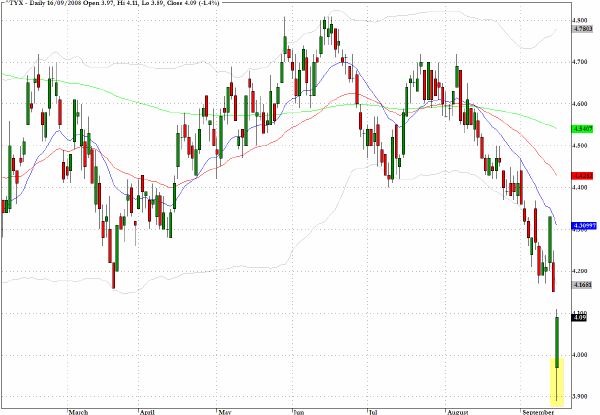
The mid-July low broke down on the S&P 500 as was being suggested by the downward wedge pattern. The index touched 1169 but rallied into the close and regained a footing above the 1200 level.
It is getting too treacherous to ask whether this really was the bottom (probably not) but moves back towards the descending line of the wedge are certain to find the 1270 area very turbulent.

The VIX topped out yesterday just below the mid-March high and reflected the fears and rumours about AIG that haunted the markets all day.
The nationalization of the insurance conglomerate which was announced late Tuesday, after the markets closed, may have marked another short-term top in this index, but trading desks will surely remain jittery while the implications of ongoing concerns about counterparty risk remain at the top of the agenda.
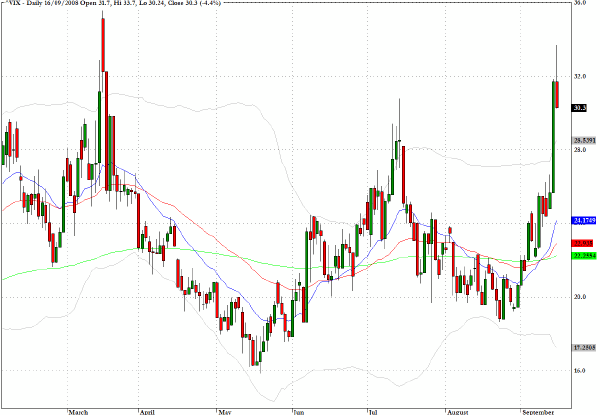
The FTSE broke below the pivotal 5000 level in yesterday's trading but managed to claw its way back to close above that level. As this is being written it appears that two of the large high street banks, HBOS and Lloyds, are finalizing arrangements to merge/amalgamate. Details are not yet available but the questions about the ongoing funding of HBOS in the wholesale money markets simply would just not go away, and the UK Treasury must be relieved that a private sector solution seems to be under way avoiding the need for another Northern Rock rescue.
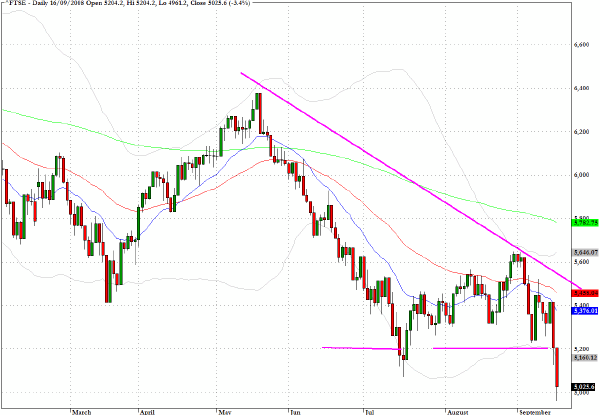
If the world is not about to cave in, then bargain hunters may be attracted by the fact that Goldman Sachs (GS) has not been this cheap since late 2005 and is now about fifty percent below its all-time highs registered last fall.
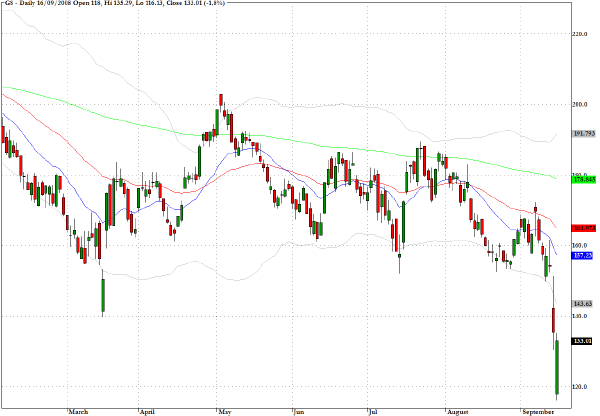
One final eye-catching chart from yesterday, which shows the opposite side of the coin to that seen in the long Treasury chart, is the plunge in the price of investment grade corporate bonds as reflected in the exchange traded fund LQD. Volume was six times the daily average and shows how the ETF marketplace is becoming an increasingly significant part of the asset class mix.
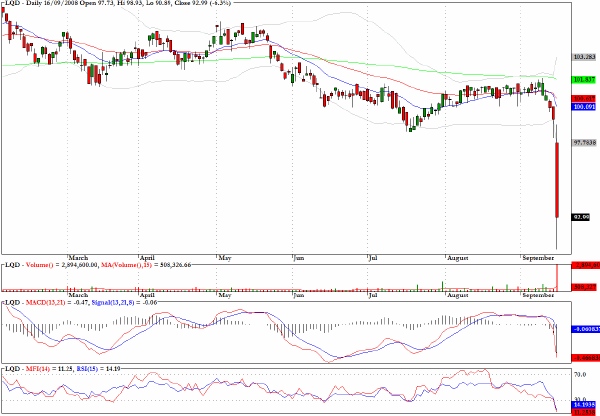
Clive Corcoran is the publisher of TradeWithForm.com, which provides daily analysis and commentary on the US stock market. He specializes in market neutral investing and and is currently working on a book about the benefits of trading with long/short strategies, which is scheduled for publication later this year.
Disclaimer
The purpose of this article is to offer you the chance to review the trading methodology, risk reduction strategies and portfolio construction techniques described at tradewithform.com. There is no guarantee that the trading strategies advocated will be profitable. Moreover, there is a risk that following these strategies will lead to loss of capital. Past results are no guarantee of future results. Trading stocks and CFD's can yield large rewards, but also has large potential risks. Trading with leverage can be especially risky. You should be fully aware of the risks of trading in the capital markets. You are strongly advised not to trade with capital.
|